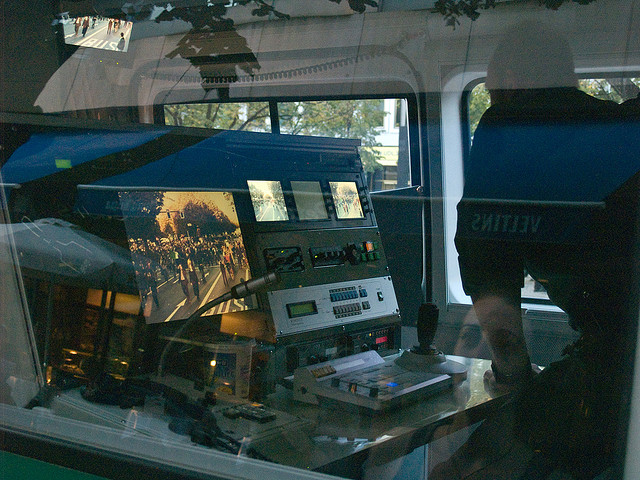
The Parramatta shooting and its aftermath demonstrate common difficulties democracies face in counterterrorism.
On Friday 2 October, 15-year old boy Farhad Jabar fatally shot NSW Police employee Curtis Cheng at Parramatta police headquarters, before being killed during an exchange of fire with officers. While details remain unclear, authorities currently consider the attack is a terrorism incident involving more people than Jabar himself.
On Wednesday, four suspects were arrested in a joint counterterrorism operation. Three were released shortly afterwards, while one was held longer. Several had earlier been on the periphery of the Operation Appleby investigation, which was a Joint Counter-Terrorism Team Operation begun in 2014 targeting an alleged plot by Islamic State (IS) supporters to publicly murder a randomly chosen person in Sydney, instructed by the now-deceased Australian IS member Mohammad Ali Baryalei.
Immediately after Wednesday’s raids, familiar criticisms were made against counterterrorism agencies, which were accused of being either too aggressive or not aggressive enough.
Because of Jabar’s reported connections to the Appleby suspects, the police were accused of having ‘dropped the ball’, by not having had him under surveillance and preventing his actions. After some of the suspects were released, criticism came from the opposite direction, with civil libertarian critics suggesting that the lack of charges meant the suspects were unjustly raided.
Those criticisms are weak. Police can’t watch everyone connected to any terrorist suspects, and the evidentiary burden for questioning people is rightly much lower for charging them, so it’s common for suspects to be released without charge.
Yet the recurrence of such criticisms highlights genuine dilemmas inherent to counterterrorism within democracies.
The problem is that counterterrorism agencies are expected to prevent all attacks. At any given point, there may be hundreds of persons of interest. But in a free society governed by the rule of law, the state can’t and shouldn’t take action against them all.
This poses great challenges. Authorities can attempt to prosecute suspected plotters when there’s compelling evidence they’re breaking laws, but that requires watching them closely and trying to gather enough evidence to catch them before it’s too late.
They can’t place all potential threats under intensive surveillance. There’s no sure-fire method for prioritising targets and pinpointing the few people genuinely about to engage in extremist violence, and the next attack could always come from an unanticipated direction as appears to have happened in Parramatta.
When police don’t have enough evidence to lay charges they can try to deter or disrupt potential plots through either high-profile raids or quiet conversations, but this won’t stop the truly determined.
Agencies can use special powers such as cancelling passports, imposing control orders or preventive detention orders, and coercive questioning. But these measures are controversial and their low evidentiary burden compared to prosecutions raises the risk of them being used mistakenly.
When used against the right people, these powers still have dangers. For example, passport confiscations are often necessary but risk redirecting the suspect’s violent attention towards home.
Governments have few ways to change this. The default option in recent years, taken not just in Australia but throughout the West, has been to expand anti-terrorism laws. Sometimes these are necessary adjustments, but often they are serious infringements on liberties without clear counterterrorism benefits.
The French experience shows that broad counterterrorism laws and highly powerful security agencies can’t stop every attack. The US approach, which relies heavily on sting operations, shows that aggressively preventative police investigations can become widely perceived as entrapment, and do sometimes in effect (though not in law) amount to entrapment. The UK experience shows that attempts to prevent the spread of extremist literature can lead to people being jailed for mere curiosity.
Another option, also common throughout the West, is for governments to implement Countering Violent Extremism (CVE) programs, which involve using non-coercive measures to reduce the likelihood of people becoming involved in terrorism. This is valuable, but far from simple and carries risks itself.
The threat’s changing nature adds another challenge. For the first decade after 9/11, the main terrorist plots in Sydney and Melbourne aimed for mass casualties and so involved considerable planning that police could monitor and foil.
However, the conflicts in Syria and Iraq and the rise of IS have dramatically boosted jihadism in Australia, increasing the number of potential plots. The plots have also become lower-tech, which fortunately means they will cause fewer deaths if carried out, but unfortunately means they are quicker to enact. This makes attacks harder to prevent, creates pressure on police to act faster, and can increase the chance of mistakes.
Terrorism inherently poses such dilemmas for free societies. There are ways to help manage the problem—accountability mechanisms, independent inquiries, parliamentary oversight, media scrutiny, academic research, professional insight, and community involvement—but no apparent solution.
The Parramatta shooting and the commentary in its aftermath, as well as that following the Monis and Haider incidents and regularly recurring counterterrorism raids, demonstrate that Australia is increasingly being forced to confront these dilemmas.

